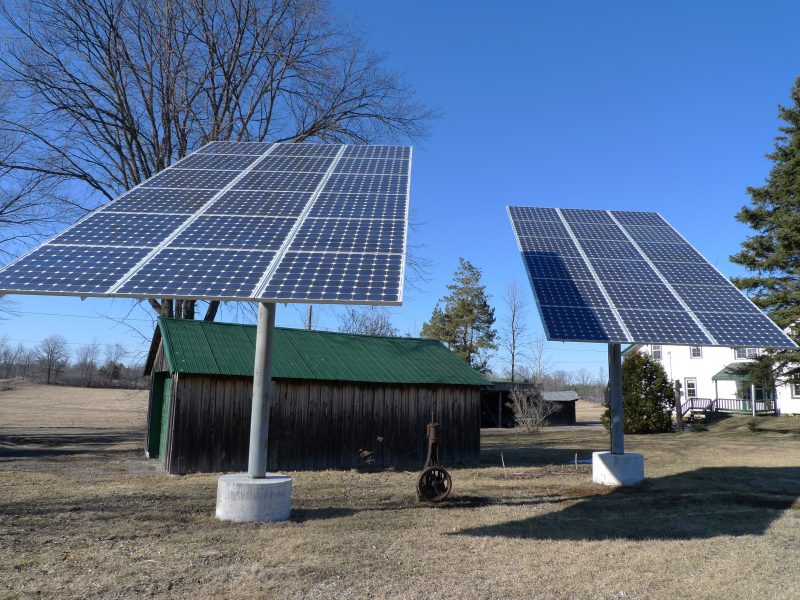Solar PV arrays hate shade. Although bill-buster solar installers may try and pile as many solar panels on your roof as possible – so they can earn more money – this can actually produce less power than a well-designed unshaded system with fewer panels.
When solar panels are in the light, it causes a current to flow. If you remember from my Electricity Basics article, the current in a series string is the same. If one panel is shaded, it reduces the current for the whole string.

Image source: https://www.flickr.com/photos/spanginator/3414028795
Let me give you an example. A 350W panel, in perfect conditions, would make 35V and 10A. You have 10 in series – in perfect conditions, 35V x 10 = 350V and 10A, for 3500W total. However, if only one panel is shaded, and because of this is limited to 1A, then the whole string is limited to 350V at 1A – 350W.
There are ways to overcome this. If there are panels that you know will be shaded, you can use optimisers, such as the Tigo, on it. The Tigo uses specialise electronics to effectively bypass the shaded panel – so in the above example, you’d have 9 panels (315V) at 10A, and 1 panel (35V) at 1A, giving you (315 x 10) + (35 x 1) = 3185W. You can use Tigos on any number of panels. Another similar option is using microinverters such as SolarEdge or Enphase – these are more expensive options that also replace the string inverter and are required on every single panel in the system.
Another way is to use parallel strings. Remember, shading limits the current of the series string. If, instead of one string of 10 panels (like the above example), you have 2 strings of 5 panels, and only one panel was shaded, you’d have one string at full performance (35 x 5 = 175V at 10A = 1750W) and one string at shaded performance (35 x 5 = 175V at 1A = 175W), for 1925W total. If your thought is “well, why not only wire panels in series?”, you should go back to my Electricity Basics article – in short, it’s not possible, as voltage must be above a certain level and current must be below a certain level, so 10 panels in parallel would have 35V (too low) and 100A (way too high).
It’s also worth knowing that shading even part of a panel can seriously reduce output. In fact, shading 1/60th of a panel could reduce the output power by 1/3rd, and shading 1/20th of a panel could reduce the output power by 100% (that is, make it produce nothing!) Now, this is not exactly the case, as solar panel manufacturers have designed ways to overcome this issue, such as bypass diodes and half-cut cells. More information on this can be found in my split cell article.
Shading can also reduce the lifespan of a panel by causing hot-spots. More info on this can be found in my hot spots article – and the split cell article, as split cell panels have a lower chance of hot spot failures than normal panels!
So, there we have it. Shading can not only dramatically reduce the output power of a whole PV array, it can actually damage the panels! This is why it’s important to buy from a company who will design a system specifically for you, using their years of experience and in-house designers to avoid any issues.










